Picture this: I’m soaring 35,000 feet above the ground, flying through the clouds, and I have the digital world at my fingertips as if I were on the ground. I’m streaming the latest from Conan on YouTube on my iPad, jumping into a game of Fortnite on my iPhone, listening to Spotify in the background, and even getting some work done on my laptop.
It sounds impossible, right? After all, inflight Wi-Fi is notoriously slow, spotty, and unpredictable, varying from airline to airline and even plane to plane. But United Airlines is trying to change that. Thanks to its partnership with Starlink for its next-generation Wi-Fi product, it is rolling out much faster and cost-free Wi-Fi across its fleet.
The process began in May 2025, when United began installing new Wi-Fi antennas and hotspots on its regional aircraft, called United Express. About 170 of those planes are already equipped.
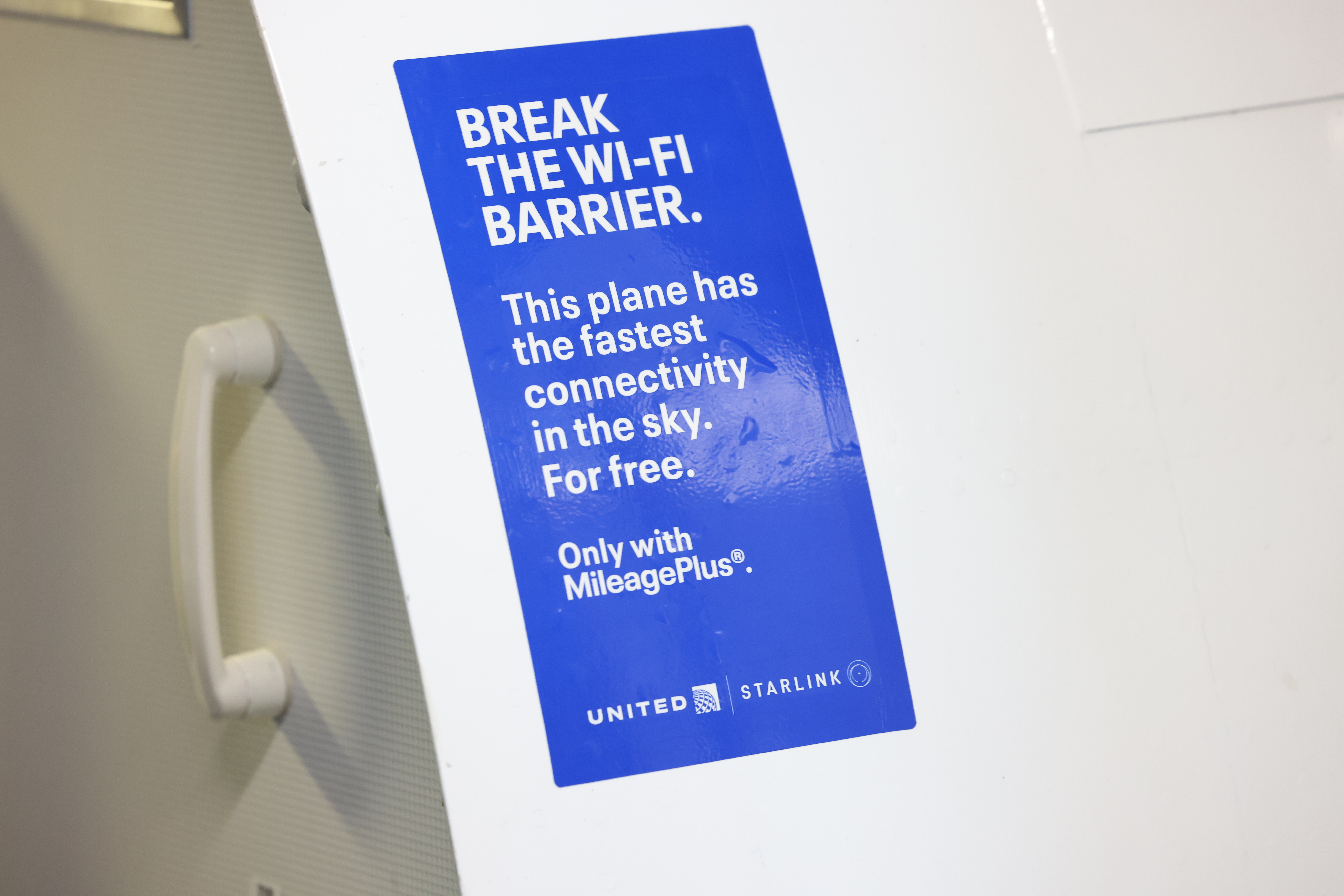
But this week marked a big milestone: United debuted Starlink on its first mainline aircraft, a Boeing 737-800. I experienced it firsthand on a test flight on October 14, 2025. The flight departed and returned to Chicago O’Hare Airport, and the next day, that same plane entered regular passenger service.
Simply put, the connection was fantastic: on par with my home Internet and sometimes even faster. More importantly, it solved some of the biggest frustrations with inflight Wi-Fi. You will no longer have to worry about dead zones, unavailable networks or slow speeds. The service was consistent, fast, easy to connect, and worked seamlessly across multiple devices.
Oh, and the best part? It’s completely free for United MileagePlus members – a loyalty program that’s free to join. So let’s review United’s Starlink inflight Wi-Fi experience, which actually begins before the front cabin door closes.
United designed this next generation of Wi-Fi to be door-to-door, meaning that even if you’re sitting at the door and then taxiing, you won’t get disconnected, even with airplane mode on. I started by putting my iPhone 17 Pro Max in airplane mode and connecting to United’s Wi-Fi network.
A note: If you have iCloud Private Relay, it’s best to disable it when using inflight Wi-Fi, as some United Airlines engineers suggested, as it can cause the connection to fail or slow down.
After this, tap on the Wi-Fi network, then select “Open Portal Page” or it will appear automatically. You’ll see United’s new branding for the product (the “Break the Wi-Fi Barrier” tagline) and a “Get Started” button. From there, the United app will open if it is installed on your phone and then the connection page will appear. Here, you’ll scroll through three pages of quick information about the service, including three rules.
Those are:
- ‘Voice and video calls are prohibited by federal law’
- ‘Enjoy audio, video, online gaming and live event content while wearing headphones’
- ‘If others might find what you’re watching offensive, choose something else to stream’
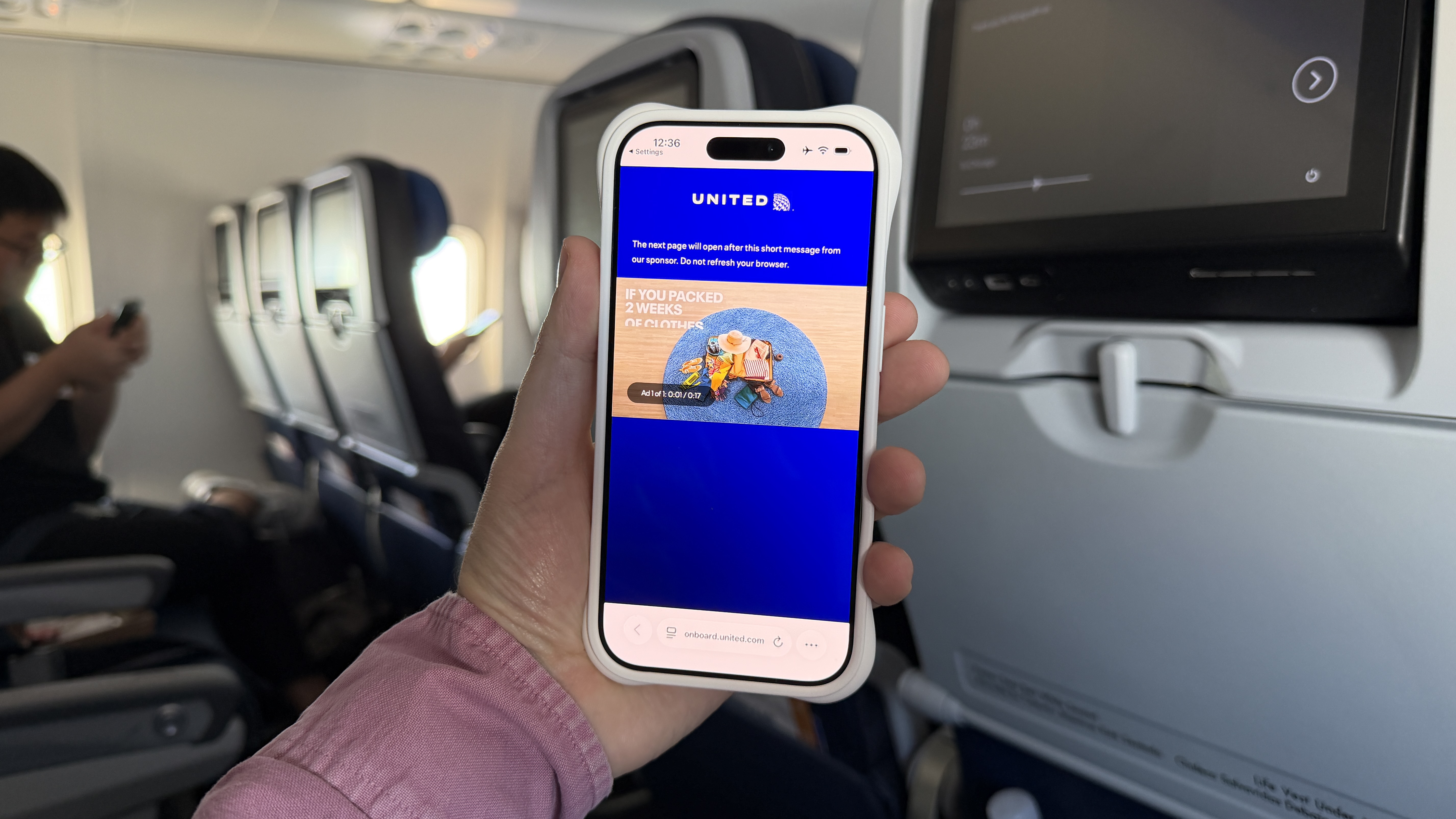
They’re pretty common sense, in line with what you’re supposed to and shouldn’t do with onboard Wi-Fi. It will then ask you if you are ready to connect and your name will appear (it will pull it from your United MileagePlus account), click Connect and then you will see a 15 second ad.
That’s much simpler than United’s current setup, which also involves connecting to United WiFi, but then on your own you have to navigate to ‘unitedwifi.com‘Select an option for texting (which is free) or full internet (which costs $8) and then follow a much slower process. I will also mention that since it is ViaSat, it is a lot, a lot, a lot slower and I wasn’t even working on my flight to this event.
However, coming back to Starlink, after that you will be connected and can prepare to use your device normally. You could stream TikToks and YouTube videos, check for mail and reply, send text messages, and even upload images or videos to a social network. I also did a speed test and got some really impressive numbers… even when running down a runway to take off.
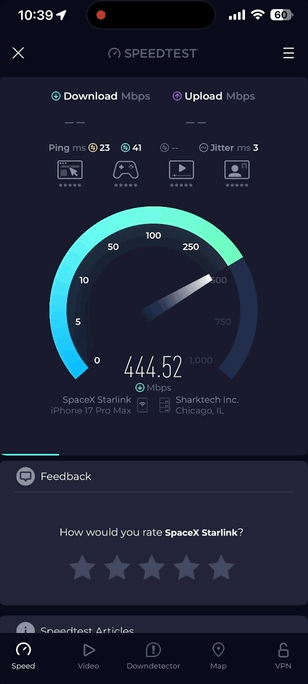
I ran a speed test with Ookla right after connecting and achieved an impressive 461 Mbps down and 43.6 Mbps up, which is almost on par with my home Wi-Fi and faster than the networks of some of my colleagues and friends. While taking off, I hit 360 Mbps down and 44.6 Mbps up—slower, but much faster than regular in-flight Wi-Fi, which doesn’t even work until you’re at 10,000 feet.
Mara Palcisco, United’s vice president of engineering and reliability, told me that this Boeing 737-800 was equipped with two Starlink antennas on the top of the plane near the front, doubling the number of antennas on United Express planes and indicating that more people will be connected.
“Wireless access points grow with the aircraft and we have wireless access points that pilots can access on the flight deck,” Palcisco explained. The latter differs from United’s current setup by allowing pilots to use the company’s distributed iPads to access additional in-flight tools, such as more detailed weather forecasts. This could be especially useful for excursions across the Atlantic or when flying over areas such as the rainforest.
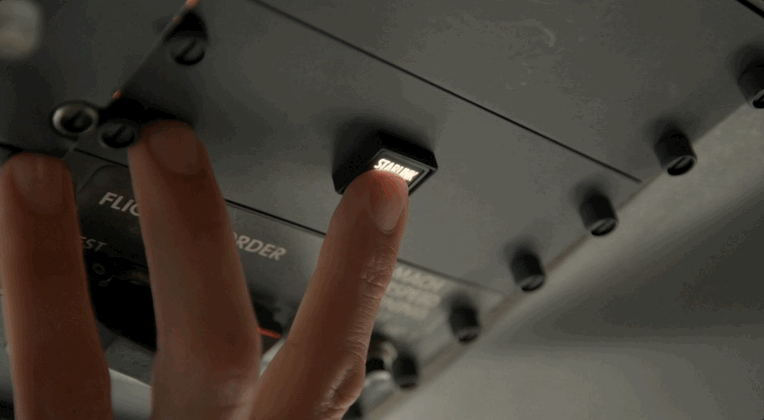
The two main antennas also connect to several Wi-Fi access points within the cabin, which is the network that passengers’ devices connect to. It’s evenly distributed throughout the cabin and United tested it fairly thoroughly, including with heat maps.
It is also designed for a passenger to connect more than one device. I followed the same steps on two other phones, an iPad and my MacBook Pro, and everything went smoothly.
I tried to connect a Nintendo Switch 2, but ran into a problem: the console’s built-in mini browser couldn’t fully load the pages needed to connect. I would see the “Let’s get started” part and then an error would appear. However, United saw this in action and are working to fix it. However, other passengers on this test flight successfully connected a Lenovo Legion Go without problems and I had no problems with my other test devices.
And even with more than five connected devices in my seat, I didn’t see any degradation in speed or connectivity. This also applies to moving around the cabin. And while neither you nor I could make a video call, I made three FaceTime calls on this test flight with headphones on; They were all practically perfect.
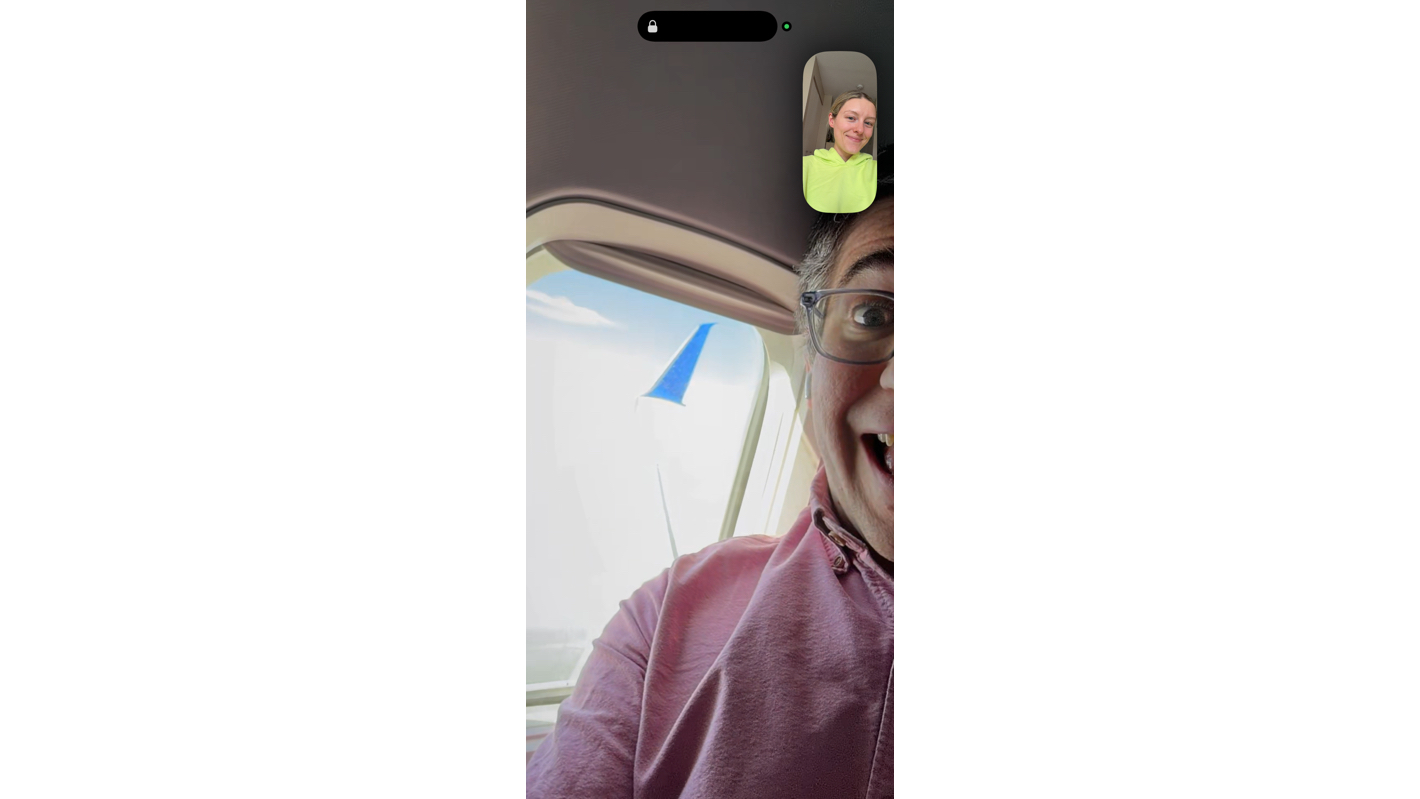
I called my friend Ellen, who you can see in the screenshot above, and my parents twice. While my audio was sometimes a little muffled, it could be that the AirPods Pro 3’s microphones were balancing the sound level for the general noise of the plane and accidentally cut off my voice, or I was speaking quietly, it actually worked.
And that’s the main gist here, similar to what Grant Milstead, United’s vice president of digital, told me earlier this year: that it’s “enabling the experience of living in the sky.” This Starlink-equipped United flight felt like it was using devices on the ground. I didn’t have to worry about completing a work task or disconnecting from the world.
I could listen to a new Spotify playlist, watch a YouTube video I didn’t download, and respond to messages in real time. No more awkward loading times or failed loads. Even being able to stream titles from Disney+, Apple TV+, Hulu, or Netflix worked here.
All this, plus the fact that it’s free, much more stable, and supports multi-device connections, makes it a true triple threat. And United is focused on bringing this experience to its entire fleet, but it will take some time.
Regarding its flagship aircraft, such as this 737-800, as well as the 757, 767, 777, 787 and Airbus models, Mara Palcisco shared: “We are starting slowly to go fast so we can perfect the installation, and from there we plan to go pretty fast.” United is starting with the 737-800 and estimates it can install it on 15 of these planes per month.
And Palcisco shared some insights into the installation process on these larger main jets: “We’re going to begin installations by leaving the ray-dome on and installing the Starlink system. We deactivate the current system, install Starlink, and at the next base check, we’ll remove the ray-dome.”
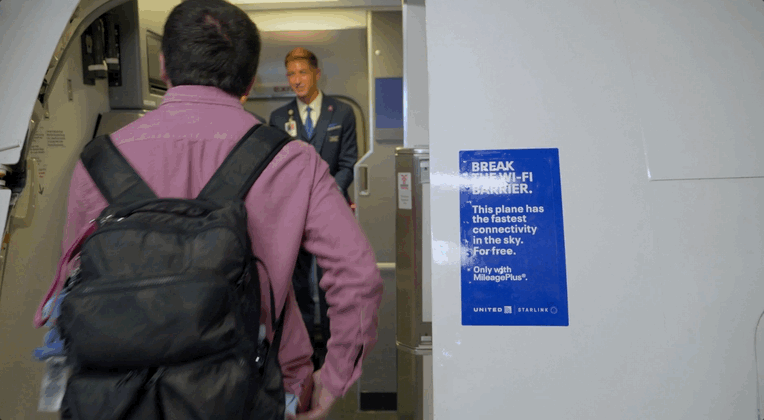
The reason for the split is that Starlink installations can be completed in a few days, while removing the old antenna is a slightly longer process. A baseline check also involves a longer interruption of service.
And Starlink, here, as at home, works by connecting to satellites in low Earth orbit about 350 miles above Earth. That compares to the oldest satellites, which are 22,000 miles above Earth. A Starlink connection can be sent back and forth 70 times in a single beam, compared to older models. That’s crazy, and thanks to these connection types, you won’t notice an interruption as you move from satellite to satellite, and you can do it much more easily during storms or bad weather.
So you can expect it to start expanding on these mainline aircraft as we move towards 2026, and it will be on 300 regional aircraft by the end of 2025; It is currently on 170 United Express regional aircraft.
It was a fantastic experience and I can’t wait to use it again. Between not having Wi-Fi working on my initial United flight and being quite slow on the flight home, the Starlink-equipped Boeing 737-800 was quite a pleasure and sets a new baseline for in-flight Wi-Fi.
Lastly, while this was not a full flight as not all seats were filled, each passenger brought multiple devices. At the very least, we weren’t making it easy for the system. Suffice to say, I don’t expect there to be any big differences from a full flight in terms of connectivity.
Milstead reinforced that Starlink was the right partner to match the size of United and its fleet: “At any given time, we are the size of a small city on the ground, so we need a lot of size and scale to support our global network, especially in our hubs, of how many passengers will access the network.” He noted that the size of the Starlink network’s low-Earth orbit satellites and the coverage they provide are key.
For now, it’s a bit of luck to be on a United flight with Starlink enabled, but if you do, you’ll test the future and cross your fingers every time you fly again to get it. And your wallet will be very happy too.
Follow TechRadar on Google News and add us as a preferred source to receive news, reviews and opinions from our experts in your feeds. Be sure to click the Follow button!
And of course you can also follow TechRadar on TikTok for news, reviews, unboxings in video form and receive regular updates from us on WhatsApp also.



